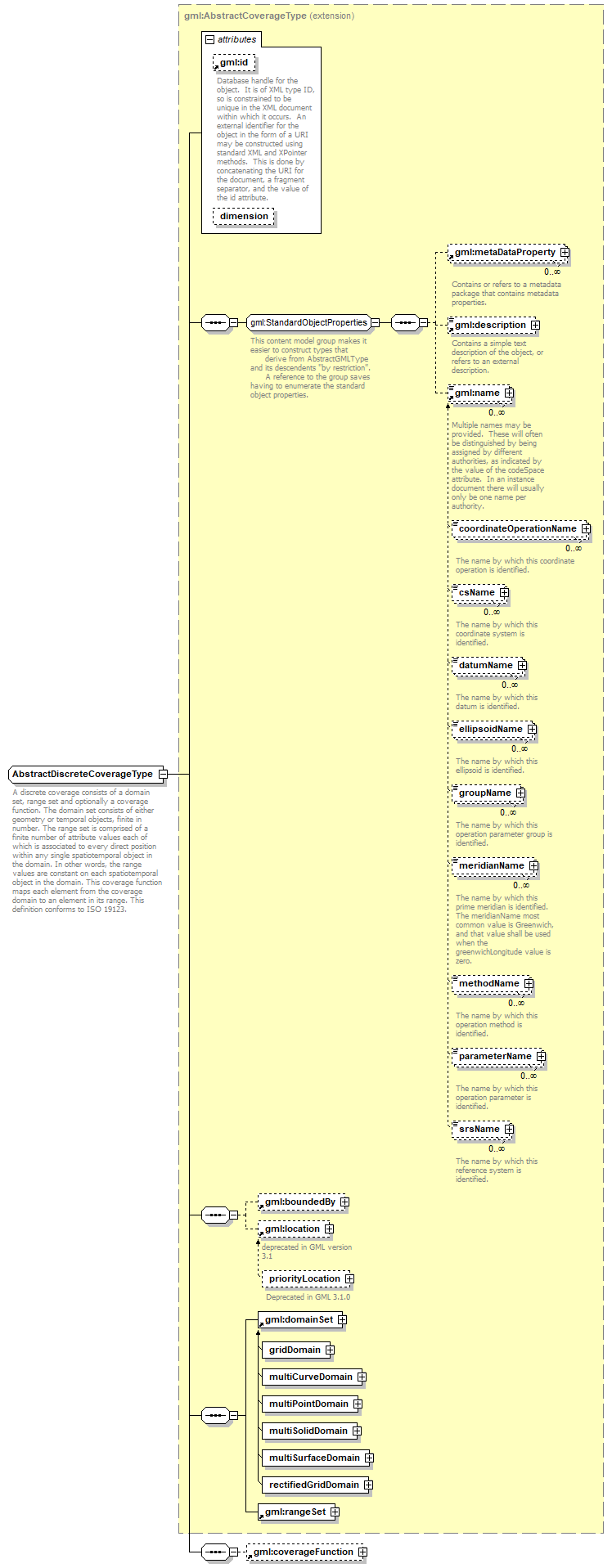| diagram |  |
||||||||||||||||||||
| namespace | http://www.opengis.net/gml | ||||||||||||||||||||
| type | extension of gml:AbstractCoverageType | ||||||||||||||||||||
| properties |
|
||||||||||||||||||||
| children | gml:metaDataProperty gml:description gml:name gml:boundedBy gml:location gml:domainSet gml:rangeSet gml:coverageFunction | ||||||||||||||||||||
| used by |
|
||||||||||||||||||||
| attributes |
|
||||||||||||||||||||
| annotation |
|
||||||||||||||||||||
| source | <xs:complexType name="AbstractDiscreteCoverageType" abstract="true"> <xs:annotation> <xs:documentation>A discrete coverage consists of a domain set, range set and optionally a coverage function. The domain set consists of either geometry or temporal objects, finite in number. The range set is comprised of a finite number of attribute values each of which is associated to every direct position within any single spatiotemporal object in the domain. In other words, the range values are constant on each spatiotemporal object in the domain. This coverage function maps each element from the coverage domain to an element in its range. This definition conforms to ISO 19123.</xs:documentation> </xs:annotation> <xs:complexContent> <xs:extension base="gml:AbstractCoverageType"> <xs:sequence> <xs:element ref="gml:coverageFunction" minOccurs="0"/> </xs:sequence> </xs:extension> </xs:complexContent> </xs:complexType> |
XML Schema documentation generated by XMLSpy Schema Editor http://www.altova.com/xmlspy